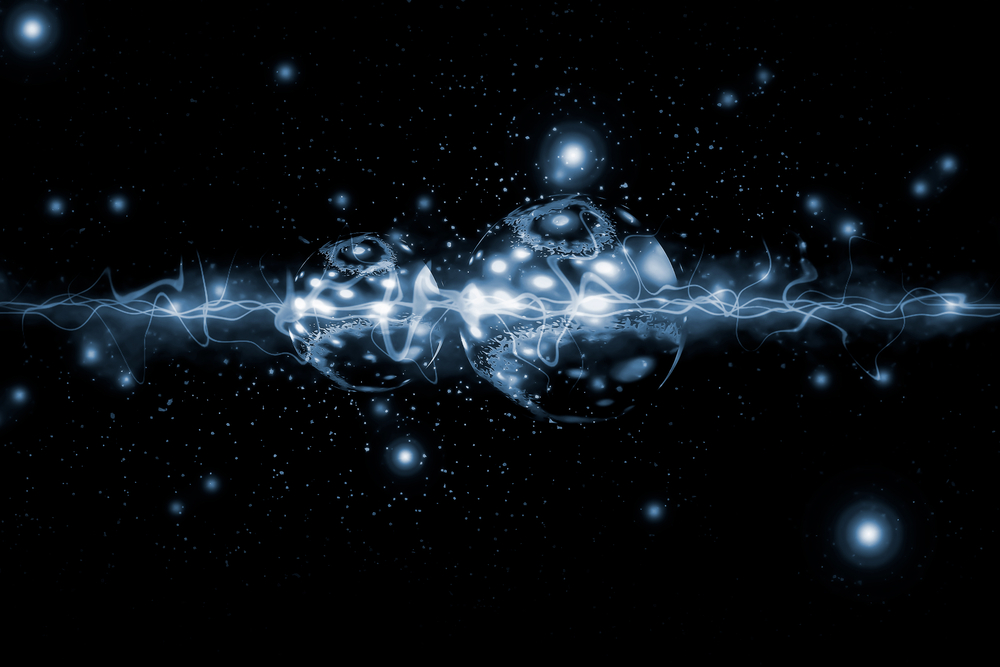Antimatter Is Both a Particle and a Wave, New Experiment Confirms

Antimatter isn't just made of antiparticles, it's also made of waves. Now we know that this holds true even at the level of a single antimatter particle.
Physicists have known for a long time that just about everything — light and other forms of energy, but also every atom in your body — exists as both particles and waves, a concept known as particle-wave duality. That's been shown again and again in experiments. But antimatter particles, which are identical to their matter partners, except for their opposite charge and spin, are much more difficult to experiment with. These twins of matter flit into existence fleetingly, usually in massive particle accelerators.
But now, physicists have shown at the level of a single positron — an antimatter twin of the electron — that antimatter, too, is made of both particles and waves.
To show that positrons are also waves, the physicists performed a more complicated version of the famous "double-slit experiment," which in 1927 first showed that electrons — a form of matter — are both particles and waves. [Strange Quarks and Muons, Oh My! Nature's Tiniest Particles Dissected]
In the original double-slit experiment, scientists fired a stream of electrons through a sheet with two slits on it, with a a detector on the other side. If the electrons had been only particles, they would have formed a pattern of two bright lines on the detector. But they acted like waves, so they "diffracted" like light, forming a spread-out pattern of many alternating brighter and dimmer lines. (When two waves overlap but are shifted relative to each other, the peaks and valleys of the waves cancel out or add up, creating a distinctive pattern known as interference. These types of experiments are known as interferometry.)
In 1976, physicists figured out how to demonstrate the same effect with one electron at a time, proving that even single electrons are waves that can "interfere" with each other.

Physicists have since shown that when you bounce positrons off a reflective surface, they behave like waves. But until now, they had never performed a double-slit experiment showing that individual positrons had a wave nature. Doing that sort of experiment offers physicists opportunities to study the behavior of antimatter at a level that's deeper than ever before.
Get the Space.com Newsletter
Breaking space news, the latest updates on rocket launches, skywatching events and more!
For this paper, published May 3 in the journal Science Advances, a team of Italian and Swiss physicists figured out how to generate a low-energy beam of positrons that could be used to perform the first antimatter version of the double-slit experiment. When the physicists directed the positrons through a more complex series of multiple slits, the positrons landed on the detector in a pattern you'd expect from waves, not individual particles.
"Our observation ... proves [the positron's] quantum-mechanical origin and thus the wave nature of the positrons," Paola Scampoli, a physicist at the Politecnico of Milano and co-author of the paper, said in a statement.
This work, the authors wrote, opens the door to a new kind of "interferometry" experiment. Next, they hope to answer questions about the wave nature of more complex exotic matter, and use those results to probe the nature of gravity at very small scales.
- The 12 Strangest Objects in the Universe
- 9 Numbers That Are Cooler Than Pi
- Image: Inside the World's Top Physics Labs
Originally published on Live Science.
Join our Space Forums to keep talking space on the latest missions, night sky and more! And if you have a news tip, correction or comment, let us know at: community@space.com.

Rafi wrote for Live Science from 2017 until 2021, when he became a technical writer for IBM Quantum. He has a bachelor's degree in journalism from Northwestern University’s Medill School of journalism. You can find his past science reporting at Inverse, Business Insider and Popular Science, and his past photojournalism on the Flash90 wire service and in the pages of The Courier Post of southern New Jersey.










